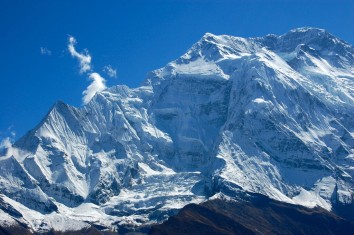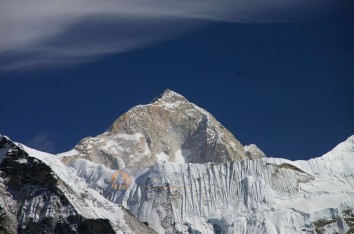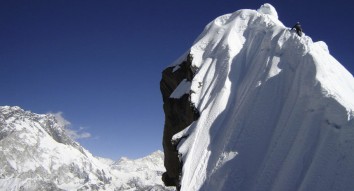Dakshinkali Temple:
.jpg)
Dakshinkali Temple: A Journey into the Spiritual Heart of Nepal
Introduction:
Nestled in the dense forests at the southern edge of the Kathmandu Valley, Dakshinkali Temple is one of Nepal's most significant and revered religious sites. This temple, dedicated to the goddess Kali, draws thousands of devotees every year, especially during the biannual Dashain and Tihar festivals. The temple’s blend of ancient traditions, vibrant rituals, and serene natural surroundings makes it a focal point of both spiritual devotion and cultural heritage in Nepal. Unique Sherpa Trek, with its deep understanding of the region’s cultural and religious landscapes, provides invaluable insights into the significance and experiences associated with this sacred site.
Historical and Mythological Background:
The origins of Dakshinkali Temple are shrouded in myth and legend, adding to its mystical allure. The temple is believed to have been established following a divine vision by King Pratap Malla in the 17th century. According to local lore, the goddess Kali herself appeared in the king’s dream, instructing him to build a temple in her honor at this specific location. This site, at the confluence of two rivers, was deemed particularly auspicious, aligning with ancient Hindu beliefs about the spiritual power of natural junctions.
The name "Dakshinkali" derives from two words: "Dakshin," meaning south, and "Kali," referring to the goddess. Kali is a formidable figure in Hindu mythology, embodying the fierce and protective aspects of the divine feminine. She is often depicted with a garland of skulls, her tongue extended, holding a bloodied sword, and standing atop the lifeless body of her consort, Shiva. This imagery reflects her role as the destroyer of evil and the protector of the universe. The southern orientation of the temple is significant, as it aligns with traditional associations of Kali with the southern direction, often seen as a gateway to the underworld and the domain of death and rebirth.
The Sacred Site:
The Dakshinkali Temple is located approximately 22 kilometers from Kathmandu, in a secluded forested area that adds to its sacred ambiance. The journey to the temple itself is an integral part of the spiritual experience, with the winding roads and dense greenery creating a sense of retreat from the mundane world into a space of divine presence.
Upon arriving at the temple, visitors are greeted by a simple yet powerful structure. Unlike the grand temples of Pashupatinath or the ornate stupas of Swayambhunath, Dakshinkali’s architecture is modest, reflecting the raw and untamed nature of the goddess it honors. The temple is built from stone, with a sloping roof typical of Nepalese temple architecture. The central shrine houses the black stone image of Kali, which is the focal point of worship.
The surrounding area is dotted with small shrines and altars dedicated to other deities, as well as platforms where the ritualistic animal sacrifices take place. The temple is flanked by the confluence of two streams, enhancing its spiritual significance as a site where natural elements and divine power converge.
Rituals and Practices:
Dakshinkali Temple is renowned for its ritualistic animal sacrifices, a practice that is deeply rooted in the local religious traditions. These sacrifices are primarily offered on Saturdays and during the Dashain festival, which is the most important festival in Nepal, celebrating the victory of the goddess Durga (another form of Kali) over the buffalo demon Mahishasura.
The sacrificial offerings at Dakshinkali predominantly include male goats, chickens, and other animals. Devotees believe that these sacrifices appease the goddess, ensuring her protection and blessings. The blood of the sacrificed animals is considered a potent offering, symbolizing the surrender of life to the divine and the appeasement of Kali’s fierce nature. The sacrifices are conducted by the temple priests, who perform the rituals with precision and reverence, ensuring that the spiritual significance of the act is maintained.
While the practice of animal sacrifice is controversial, particularly among animal rights advocates, it remains an integral part of the religious practices at Dakshinkali. For many devotees, the act of sacrifice is a profound expression of faith, an offering of life force to the goddess who governs the cycle of life and death. It is believed that through these offerings, Kali is transformed from a destroyer into a benevolent protector, ensuring the well-being of her devotees.
Spiritual Significance and Pilgrimage:
Dakshinkali is more than just a temple; it is a pilgrimage site of immense spiritual significance. Every year, thousands of pilgrims from across Nepal and neighboring India make the journey to Dakshinkali to offer their prayers and sacrifices to the goddess. The pilgrimage to Dakshinkali is considered an act of devotion and penance, often undertaken to fulfill vows or seek the goddess’s blessings for health, prosperity, and protection.
The temple is especially significant for women, who come to pray for fertility, protection, and the well-being of their families. It is common to see women offering small effigies made of dough, which are then sacrificed as part of their prayers. The presence of women in the rituals highlights the goddess’s role as a protector of the family and a giver of life.
The spiritual atmosphere at Dakshinkali is intense and immersive. The air is thick with the smell of incense and the sound of prayers, mingling with the cries of animals being sacrificed. The juxtaposition of serenity and sacrifice, devotion and destruction, creates a powerful spiritual experience that resonates deeply with those who visit.
Dakshinkali in Contemporary Context:
In recent years, the practice of animal sacrifice at Dakshinkali has sparked debate both within Nepal and internationally. While some view it as an essential part of the region’s religious heritage, others call for the practice to be reformed or abolished, citing concerns about animal rights and changing social attitudes. Despite this, the temple continues to attract large numbers of devotees, and the rituals remain largely unchanged.
Unique Sherpa Trek, with its extensive knowledge of Nepal’s cultural and religious landscape, offers visitors a nuanced understanding of Dakshinkali’s significance. By contextualizing the rituals and practices within the broader framework of Hindu beliefs and Nepalese traditions, Unique Sherpa Trek helps visitors appreciate the deep spiritual connections that underpin the temple’s activities.
Conclusion:
Dakshinkali Temple is a site of profound spiritual significance in Nepal, where the fierce and protective aspects of the divine feminine are worshipped with unwavering devotion. The temple’s rituals, particularly the animal sacrifices, are a powerful expression of faith and an integral part of the local religious tradition. While these practices may seem alien or controversial to outsiders, they are deeply meaningful to the devotees who seek the goddess Kali’s blessings.
For those who visit, Dakshinkali offers an intense and transformative experience, a journey into the heart of Nepal’s spiritual and cultural heritage. Unique Sherpa Trek provides a unique opportunity to explore this sacred site with a deep respect for its traditions and an understanding of its significance within the broader tapestry of Nepalese spirituality.


.jpg)
.jpg)





.jpg)

